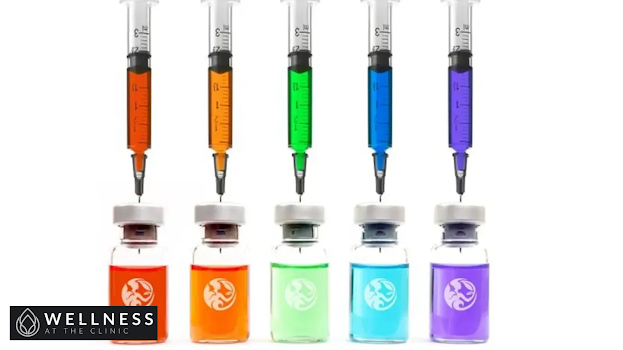Understanding the Mechanisms and Benefits of Cryotherapy Treatments
Cryotherapy, a term derived from the Greek words "cryo", meaning cold and "therapy", meaning cure, is a treatment that exposes the body to frigid temperatures for a short period. This innovative therapy is gaining popularity for its potential health benefits, ranging from pain relief and muscle recovery to skin rejuvenation and weight loss. In this blog post, we'll delve into the mechanisms of cryotherapy, how it works, and what to expect during a session.
The Science Behind Cryotherapy
Cryotherapy involves exposing the body to frigid temperatures, typically between -110°C to -140°C (-166°F to -220°F), for a few minutes. The process can be administered in various forms, including whole-body cryotherapy, localized cryotherapy, and cryotherapy facials.
Whole-Body Cryotherapy
In whole-body cryotherapy (WBC), individuals step into a cryotherapy chamber or cryosauna, enveloped in a cold mist of nitrogen gas. The exposure typically lasts between 2 to 4 minutes. The extreme cold triggers a systemic response, prompting the body to react in ways that promote healing and rejuvenation.
Localized Cryotherapy
Localized cryotherapy targets specific body areas, such as joints or muscles, using a device that emits a concentrated stream of cold air. This method often reduces pain and inflammation in targeted regions, offering relief without whole-body exposure.
Cryotherapy Facials
Cryotherapy facials, also known as cryo facials, involve the application of cold air or nitrogen vapours to the face. This treatment aims to tighten the skin, reduce pore size, and promote a youthful appearance by stimulating collagen production.
Mechanisms of Cryotherapy
Understanding how cryotherapy works requires a look at the physiological responses triggered by extreme cold exposure.
Vasoconstriction and Vasodilation
When exposed to cold temperatures, the body's initial response is vasoconstriction, where blood vessels constrict to reduce blood flow to the skin's surface. This response helps preserve core body temperature by limiting heat loss. Once the body returns to average temperature, vasodilation occurs, and blood vessels dilate, increasing blood flow. This process helps flush out toxins and brings oxygen and nutrients to tissues, promoting healing and recovery.
Endorphin Release
Cryotherapy stimulates the release of endorphins, the body's natural painkillers. These chemicals interact with receptors in the brain to reduce pain perception and induce euphoria. This response can be particularly beneficial for individuals with chronic pain or post-exercise muscle soreness.
Anti-Inflammatory Effects
Cold exposure has well-documented anti-inflammatory effects. By reducing the temperature of the treated area, cryotherapy can decrease inflammation and swelling, making it a valuable treatment for conditions like arthritis and sports injuries. The cold triggers a reduction in pro-inflammatory cytokines and an increase in anti-inflammatory cytokines, creating a balanced immune response.
Metabolic Boost
Exposure to extreme cold prompts the body to work harder to maintain its core temperature, which can temporarily boost metabolism. This increased metabolic rate can aid in weight loss combined with a healthy diet and regular exercise. Additionally, cryotherapy can activate brown adipose tissue (BAT), which burns calories to generate heat.
What to Expect During a Cryotherapy Session
If you're considering cryotherapy, knowing what to expect during a session is essential to ensure a comfortable and beneficial experience.
Pre-Session Preparation
Before your cryotherapy session, you must remove any jewellery and wear minimal clothing, typically undergarments and socks. Some facilities provide gloves, slippers, and a headband to protect extremities from the cold. It's crucial to be dry before entering the chamber, as moisture can increase the risk of frostbite.
The Cryotherapy Session
During a whole-body cryotherapy session, you'll step into the cryotherapy chamber cooled with nitrogen gas. The technician will set the timer for 2 to 4 minutes. You'll feel an intense chill as the cold mist fills the chamber. While this can be uncomfortable, it is generally well-tolerated due to the short duration. You can move around or rotate within the chamber to help distribute the cold evenly.
The technician will use a handheld device to direct cold air to the targeted area for localized cryotherapy. Depending on the treatment area and desired outcomes, these sessions typically last 5 to 10 minutes.
Post-Session Experience
After exiting the cryotherapy chamber, you may feel an immediate rush of warmth as blood flow returns to the skin's surface. Thanks to the endorphin release, many people feel invigorated and energized after a session. It's recommended to perform light physical activity, such as walking or stretching, to help normalize body temperature and enhance the treatment's benefits.
Safety and Considerations
While cryotherapy is generally safe, it's essential to consider any health conditions or contraindications before undergoing treatment. Individuals with cardiovascular issues, severe hypertension, or cold allergies should consult with a healthcare professional before trying cryotherapy. Ensure the facility follows safety protocols and employs trained technicians to administer the treatment.
Cryotherapy offers a unique and effective way to promote healing, reduce inflammation, and enhance overall well-being. By understanding how cryotherapy works and what to expect during a session, you can make an informed decision about incorporating this innovative therapy into your wellness routine. Whether you're seeking pain relief, improved athletic performance, or a rejuvenated appearance, cryotherapy may hold the key to unlocking your body's potential for recovery and renewal.
%20(7).png)
.png)


Comments
Post a Comment